Basic Face Painting Brushes You Should Be Familiar With
Did you know that there are a lot of basic face painting brushes? Also, did you know that familiarizing yourself with these brushes is essential? Get to know what brushes your face painter uses on you and your kid’s face below!
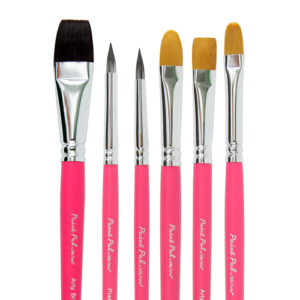
Face Paint Brushes
One of the tools that face painters are meticulous about are brushes. Brushes come in different brands, types, and of course, quality. The higher the quality, the better the results, which is why the majority of face painters choose their brushes wisely. Now, since we are talking about face painting, the brushes will usually be short-handed. The reason besides them taking less space in your kit, is that it also provides balance to the painter. Plus, short brushes are easier to use for people who need to work closely with their clients.
Kinds of Handles
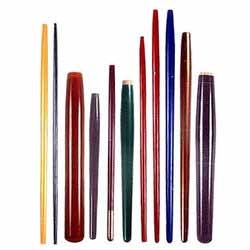
Brush Handles
Face paint brushes come in two different handles, where one is made out of acrylic, while the other is made out of wood. Both are good, but the wooden ones tend to swell when soaked in water. If this happens, you may see some cracking in the face paint brush’s handle. But if you prefer this type of handle and experience this problem, then you can correct it by applying polyurethane. For you to be able to avoid this problem, it would be best to avoid soaking the handle in the water.
Kinds of Bristles
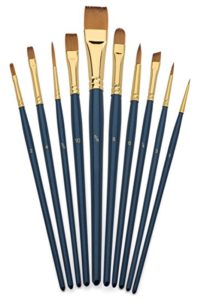
Brushes
There are two types of bristles used in paint brushes which are the synthetic and the animal hair. Synthetics are usually made out of polyester, while animal hairs can be from sable to hog. Majority of face painters use the synthetic bristles because of its subtle point and the durability that it has. And another good thing about them is that they are affordable and usually have a better spring. Some face painters also use animal hair, but the ones from sable have the best point. This is, of course, good for painting as well. But if you are going to choose, I’d say the synthetic would be best.
Basic Face Paint Brushes
As mentioned above, there are different basic face paint brushes. Typically, face painters will use different types of brushes, depending on their needs. Here are some of the face paint brushes that you should be aware of.
Liner Brush

Liner Brush
The liner brush is also known as the script to the rigger brush. This kind of brush has a spending and long bristle area. It has different sizes, but the majority of face painters today use number 2 and 3. One of the reasons why painters love liner brushes is because of how it holds extra paint. This just means that you no longer have to load while you are making lines frequently. Liner brushes are for outlining dragons or masks. When it comes to paints, wax-based ones would be best.
Round Brush

Round Brush
The round brush is excellent in making flower petals, swirls, and teardrops. It is also used in little areas in the face if needed. There are different sizes of round brushes, wherein they range from numbers 1 to 6. Usually, majority of the face painters today use sizes number 1, 2, 4, and 5. But there are also some round brushes that range from 8 to 12. So if you are into teardrop shapes, then you can opt for number 8, 10, and 12.
Filbert Brush
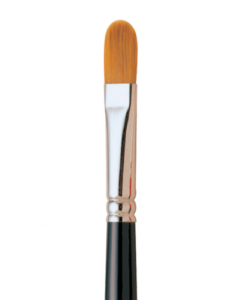
Filbert Brush
Another popular kind of brush is the filbert brush. It is similar to that of a flat brush, but the bristles’ tips are curved. This means that this kind of brush is perfect for edges that are curved. There is also a double filbert brush, wherein the sides can help you create flower petals. Filbert brushes come in different size from 3/4 inch to 1/4 inch. There are face painters who prefer using half an inch, but typically this will depend on the designs that the face painter usually does.
Flat and Bright Brushes

Flat and Bright Brush
A face painter that you will be hiring should have the flat and bright brush. This is because these brushes can cover large spots. In fact, they are more efficient than the round brush. Majority of face painters use an inch, 3/4 inch and half an inch brushes. This is because it can make face painting easier and faster since time is crucial when it comes to face painting.
Angle Brush
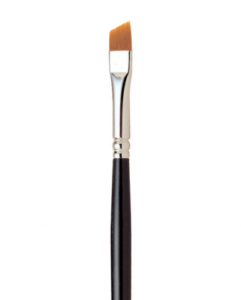
Angle Brush
The angle brush is similar to flat brush, but the bristles are angled. One side is shorter, while the other side is longer. A lot of face painters love this kind of brush for one stroke butterflies, leaves, and roses as well.
Fan Brush

Fan Brush
The fan brush is shaped like that of a fan, as the name says. The bristles are thinly placed in ferrule, which gives it a wispy effect when you are face painting. Typically, the fan brush will look gorgeous when creating a fur effect.
Wisp Brush
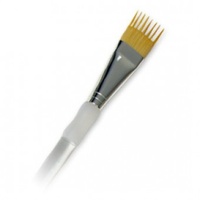
Wisp Brush
The wisp brush can replace the form of a fan, filbert, angle brush, and flat brush. But when it comes to the wisp brush, the bristles are shortly trimmed, which allows it to create different parallel lines. A wisp brush is usually used to create delicate and interesting effects when it comes to designs.
These are some of the types of basic face painting brushes that your face painter should have. Having more than two brushes is ideal, as this will give an impression that the face painter that you’re going to hire is indeed a professional. The number of brushes will also assure you that the face painter knows not just the primary designs but the challenging ones as well. Of course, this doesn’t mean that the brushes are the only basis when it comes to choosing the best face painter. You also need to consider other things, including the credentials and the past experiences of the face painter.
